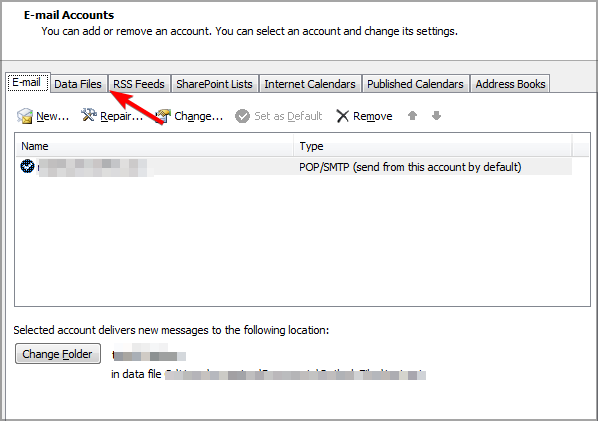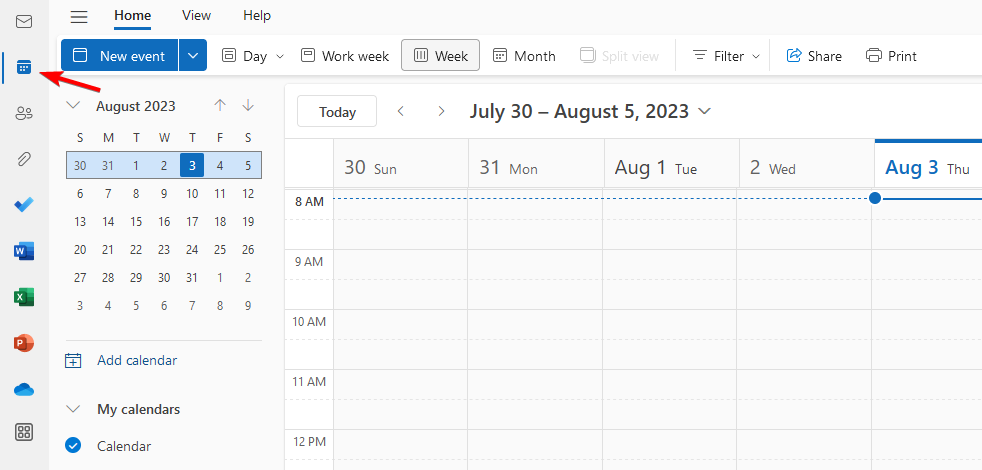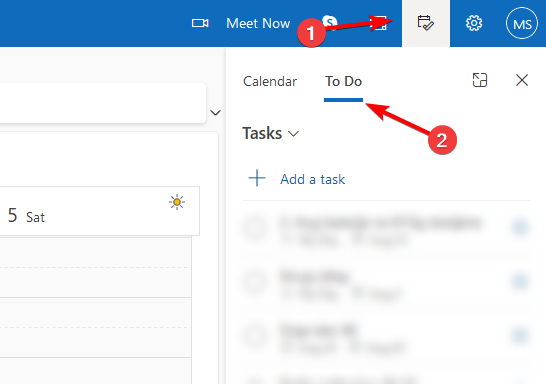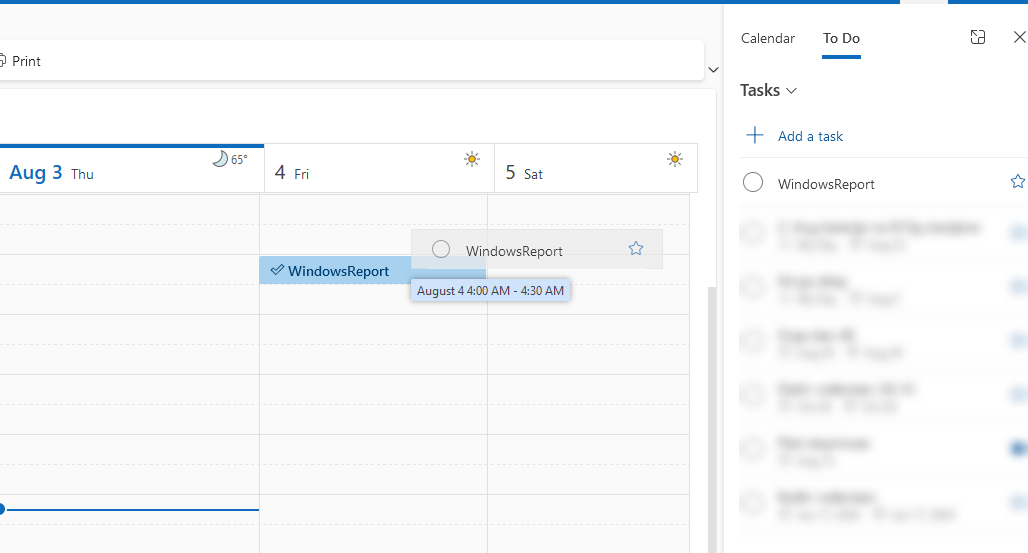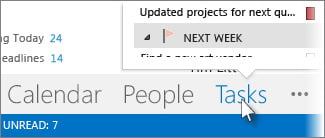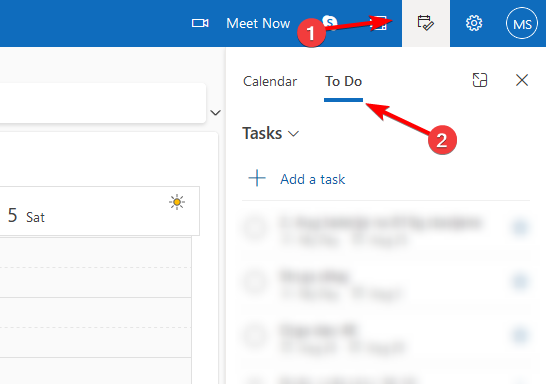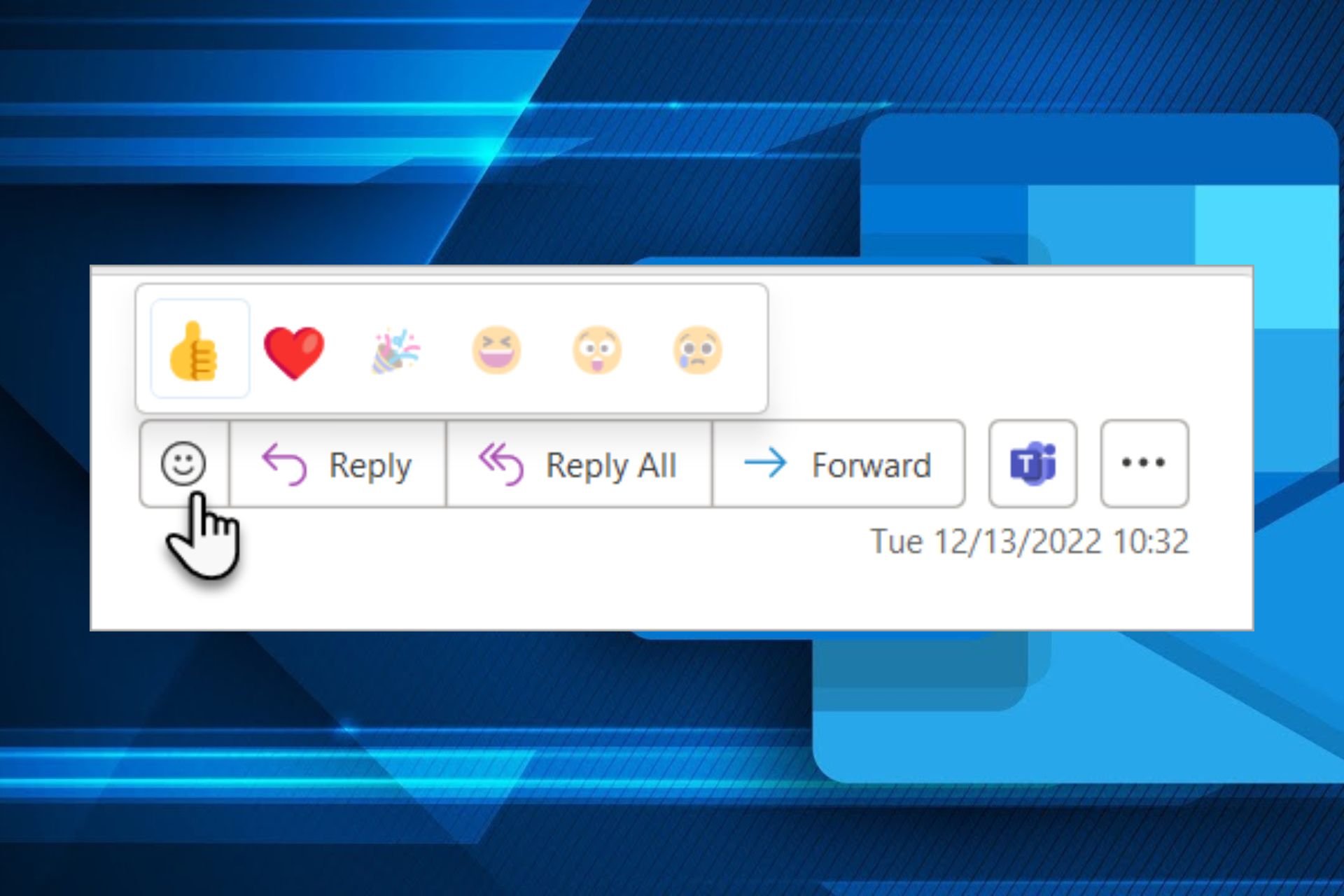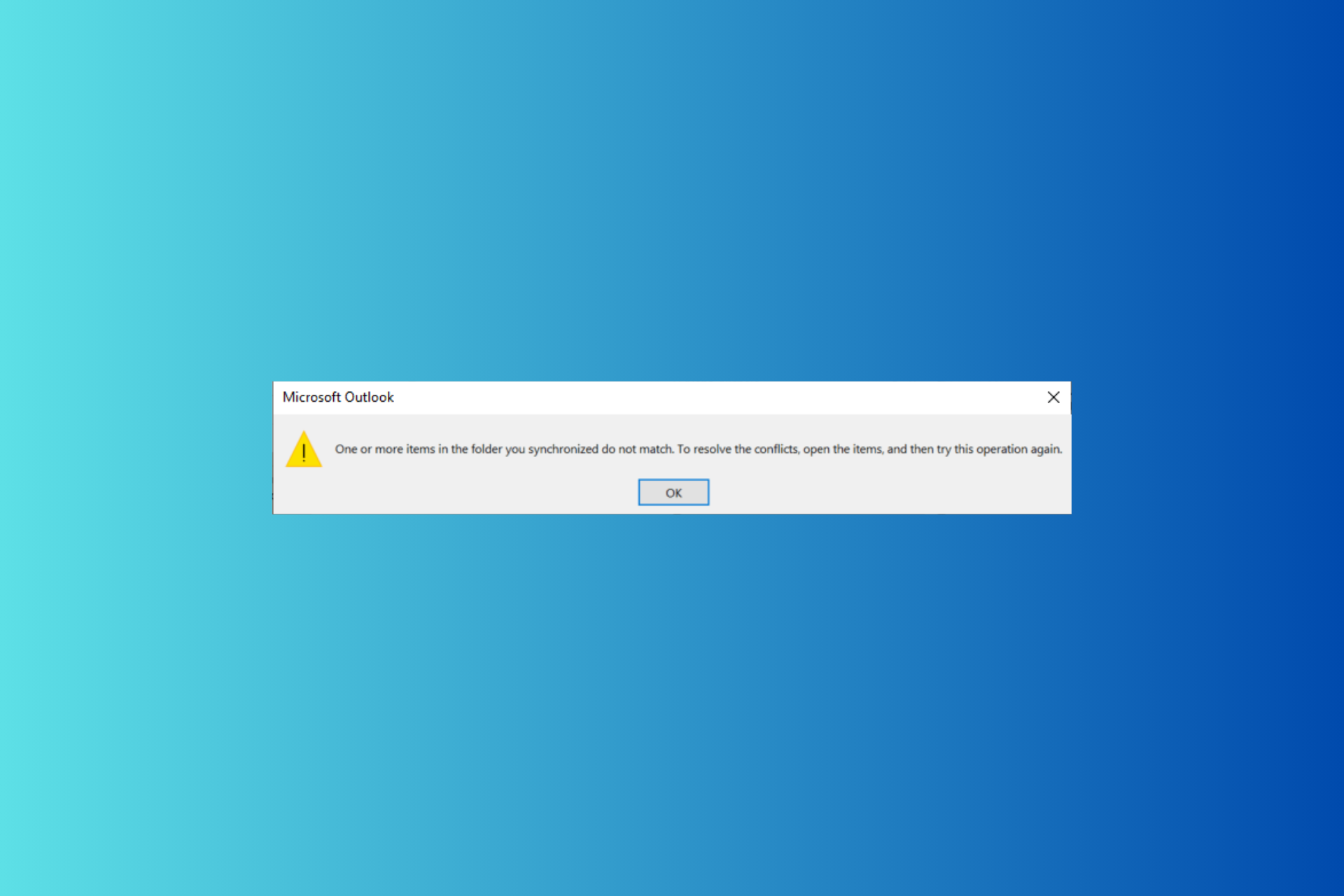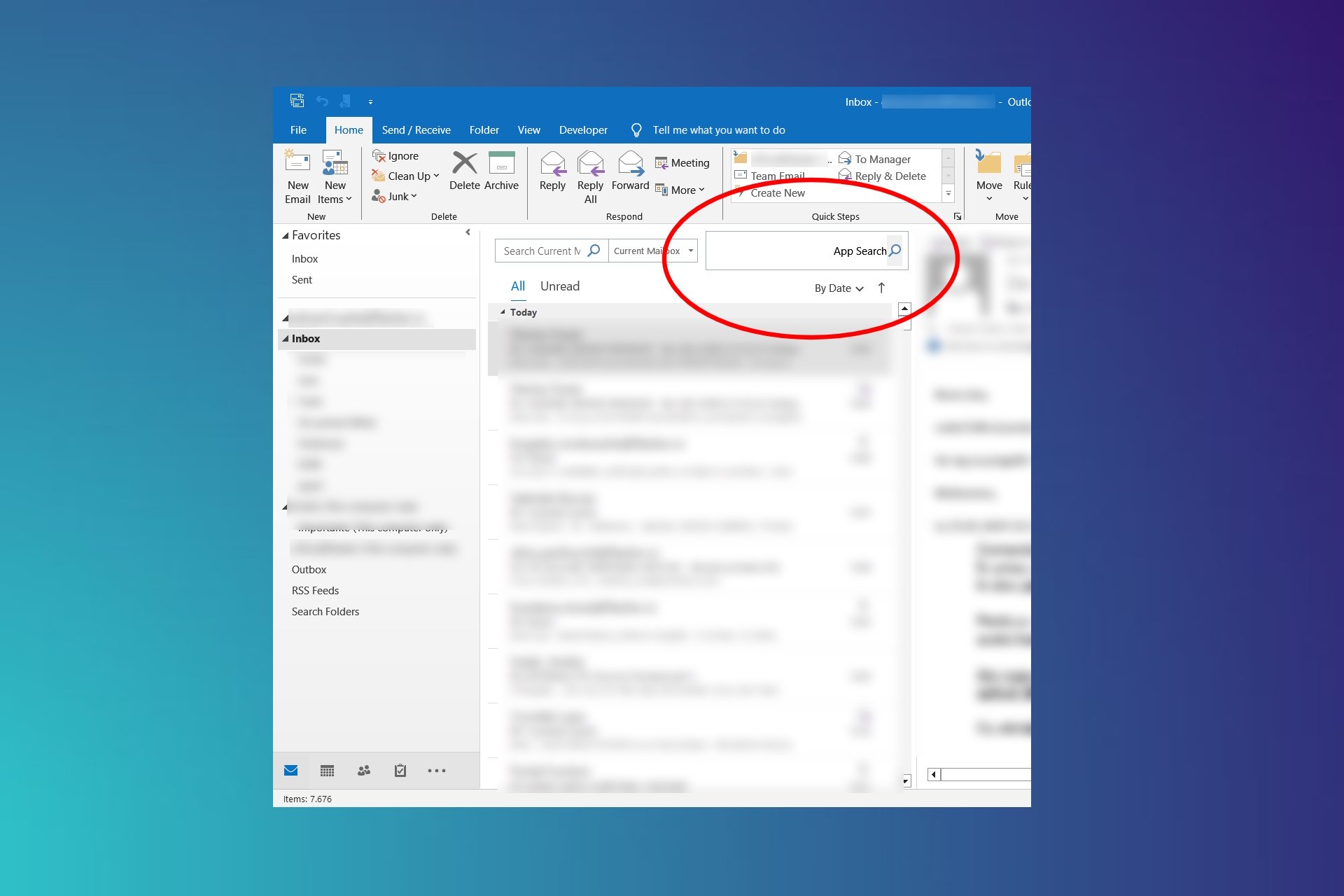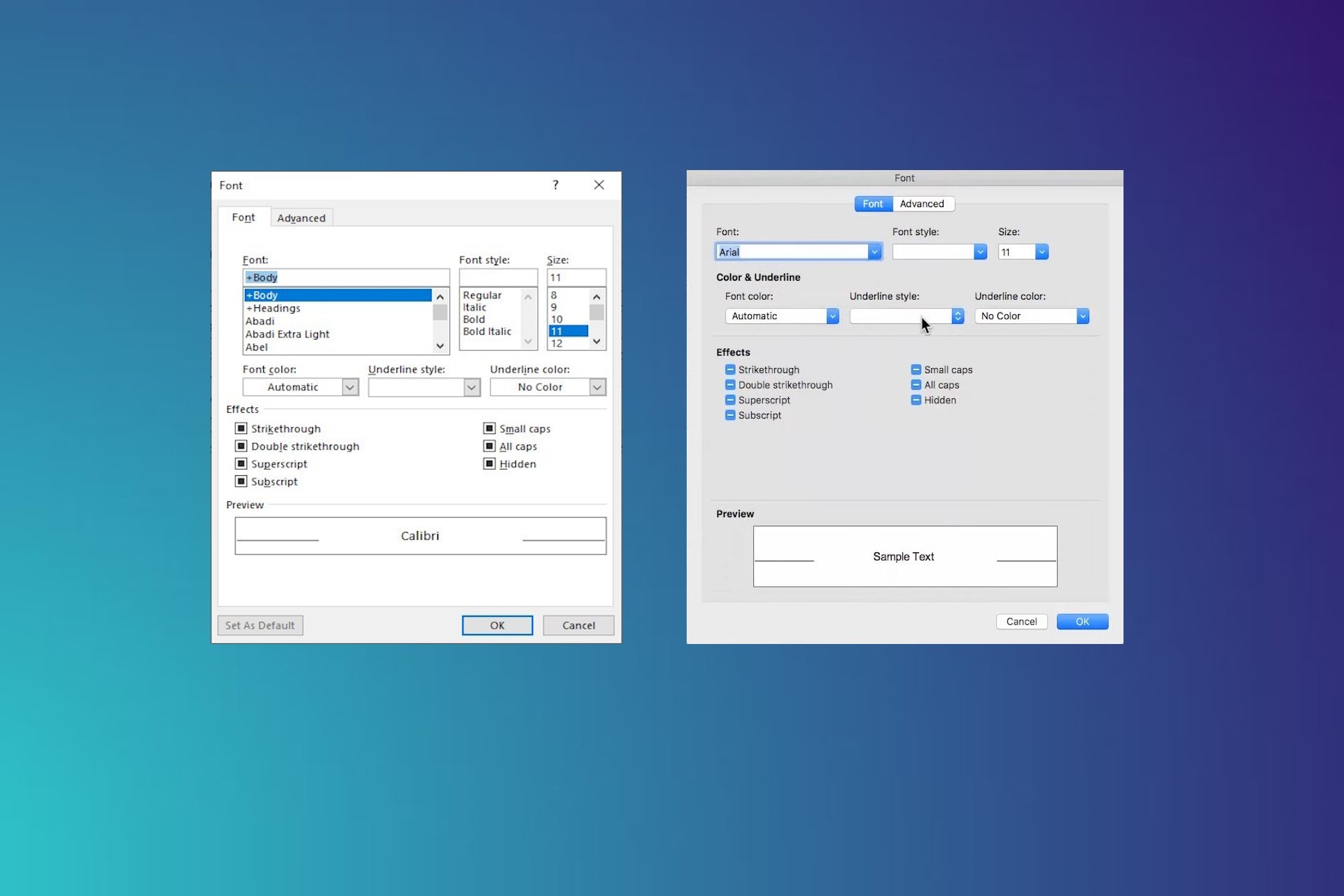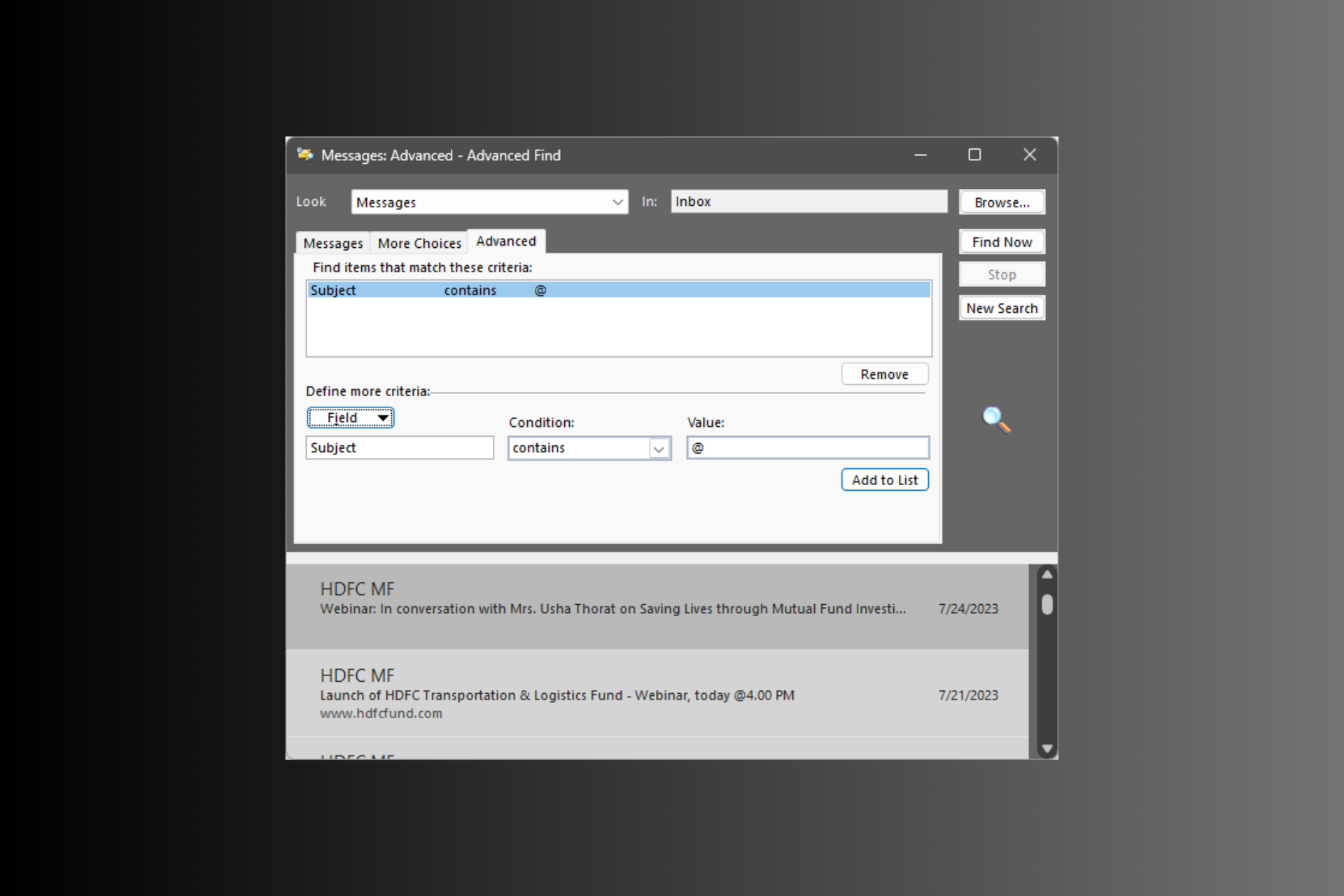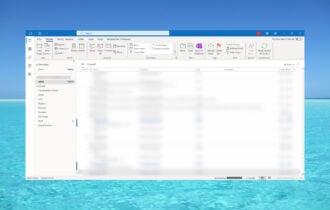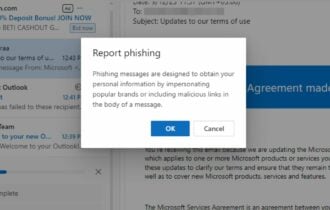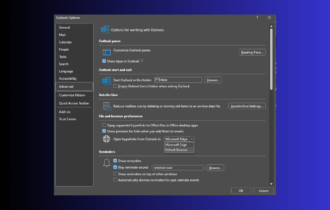How to Show & Manage Tasks in Outlook Calendar
Apply our detailed procedure right away
4 min. read
Updated on
Read our disclosure page to find out how can you help Windows Report sustain the editorial team Read more
Key notes
- Outlook allows you to show tasks from Microsoft To Do on its calendar.
- You can easily do that, but for this to work, you have to add your tasks manually.
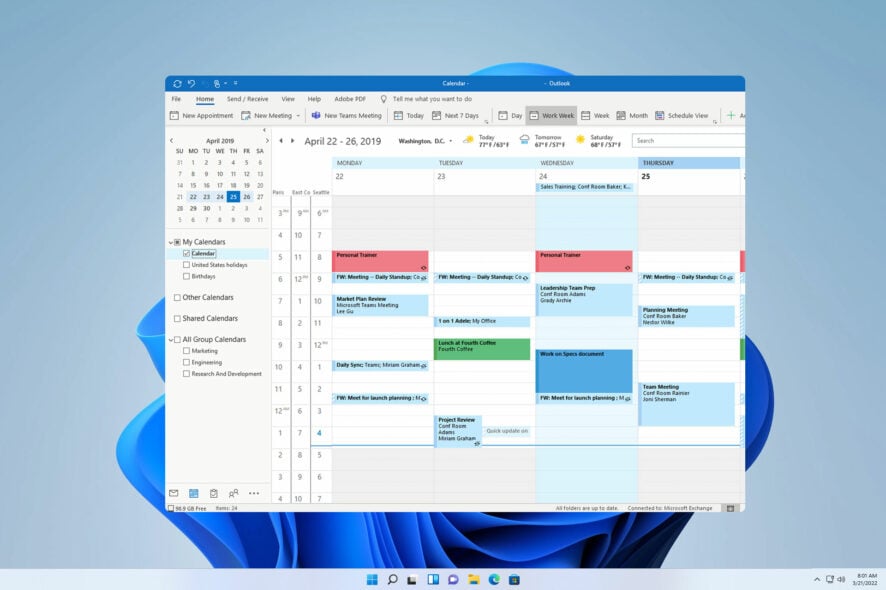
If you’re on a busy schedule, it’s important not to miss any important tasks or events. This is why many wonder how to show tasks on the Outlook calendar.
Missing an important event can be detrimental, so it’s essential to know how to manage your tasks in Outlook, and this guide will show you how to do it.
Why can’t I see tasks on the Outlook calendar?
- Your default mail account isn’t the same account you’ve added tasks to.
- Your tasks aren’t under the main tasks folder in Microsoft To Do or in Outlook in the web task pane.
Set the default calendar in Outlook
- Navigate to File and select Info.
- Now choose Account Settings and select Account Settings again.
- Next, navigate to the Data Files.
- Select the account you use for tasks and choose Set as default.
Did you know you can download Outlook calendar? Yes, and you can use this feature to export and transfer your data quickly.
How do I show tasks on the Outlook calendar?
Move them to the Calendar manually
- Open Outlook, or Outlook for Web.
- Select the Calendar icon from the left pane.
- From the top menu, select My Day and then To Do. Your task list will now appear.
- Locate the task that you want and drag and drop it to the desired slot on the calendar. This will create cards for calendars in Outlook that you can move around.
- Repeat this for all tasks that you want to show on Outlook Calendar.
This is all possible thanks to the Calendar Board feature in Outlook. If you want to learn more, we have a great guide on making Outlook calendar private, so be sure to check it out.
In case you prefer public calendars, check our guide on how to add a public folder calendar to Outlook.
Keep in mind that sometimes Outlook crashes when opening calendar, but we have a dedicated guide that can help you with that.
Integration with Microsoft To Do
Although Outlook and Microsoft To Do are integrated, this isn’t perfect, and there is a place for improvement.
Microsoft To Do is available in Outlook and can be accessed on both desktop and web versions. You can also create a task from an email and check it under To Do tab on Outlook.
For desktop:
If needed, you can sort tasks by clicking on Tasks and selecting the Home drop-down menu.
For Web:
This can be quite useful since it allows you to create tasks, delete them and add them easily to your calendar. However, To Do doesn’t automatically add your tasks to the calendar, as many would think.
Instead, you have to manually do that for every task you want to add to your task list. This can be a good or a bad thing, depending on how you use it.
Keep in mind that you might encounter issues with the service because few have reported that Microsoft To Do is not syncing properly.
We love this method, but we hope there will be an option for a complete calendar and To Do synchronization.
As you can see, it’s easy to show tasks on the Outlook calendar, but unfortunately, you can’t automatically show all of your tasks. Instead, you will have to add them to your to-do list manually.
For those with multiple accounts, you can enable the view multiple calendars in Outlook feature to display all your tasks at once.
In case you want to learn more, we have a great guide on how to assign tasks in Microsoft To Do, so be sure to read it.
And if you ever change your mind and want to keep completed tasks tucked away, check out our guide on hiding completed tasks in Outlook.
Have you ever used Outlook with Microsoft To Do? Tell us more about your experience in the comments below.


